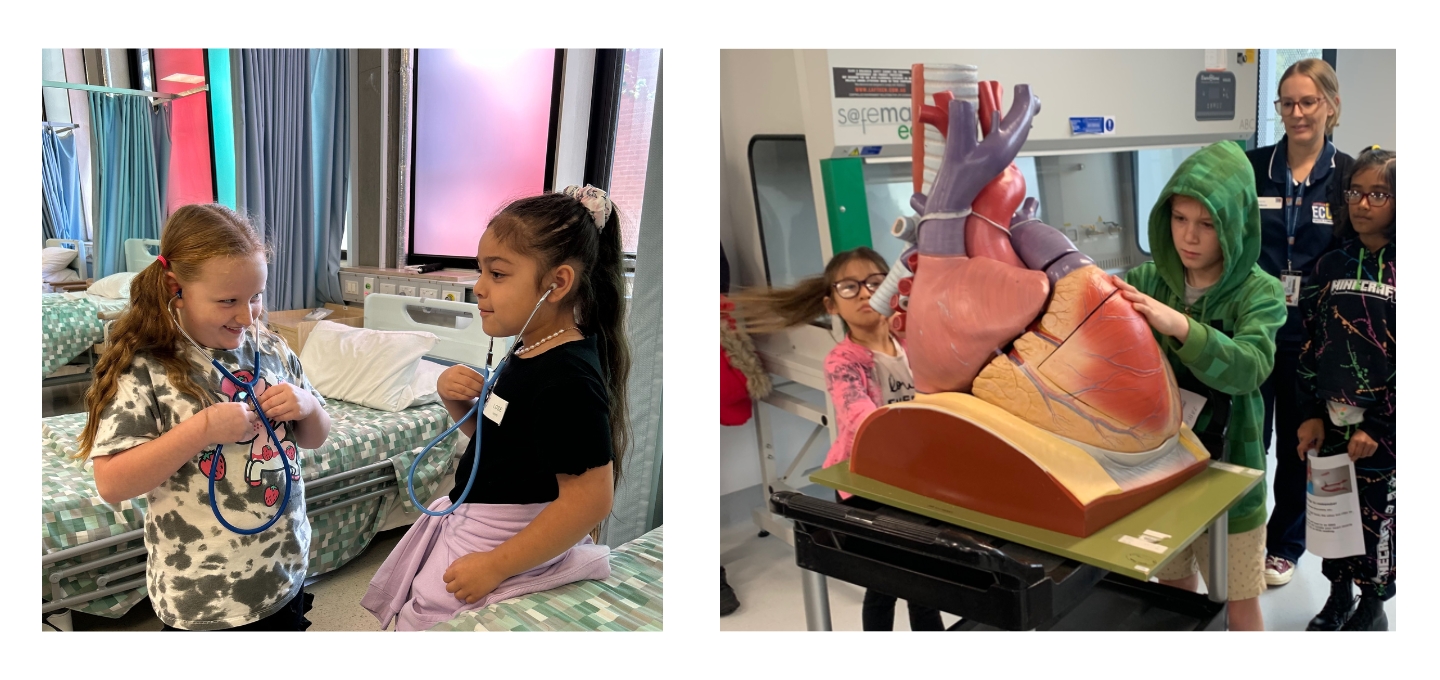Katherine Dix, Children’s University: providing an educational passport for aspirations, ACER Discover, 21 August 2024

Why are options and opportunities in life more visible to some people than others? New research shows one approach to broadening the educational horizons for disadvantaged students is doing just that.
Visits to museums, wildlife parks, sports venues and libraries could be common activities for student excursions or school holidays. But what about driving ‘cobots’ (collaborative robots) in an innovation precinct, or taking part in simulations with student doctors at a hospital?
These are just some of the fun activities students from Adelaide schools connected with Children’s University (CU) recently enjoyed.
Now, an Australian Council for Educational Research (ACER) evaluation of CU’s programs in Australia and New Zealand shows the benefits go well beyond fun.
CU is a multi-country program that aims to foster a love of learning and encourage aspirations for university by increasing access to stimulating extra-curricular experiences for groups who are underrepresented in higher education.
This includes a focus on children and young people with First Nations and Māori heritage and those living in regional and remote areas.
Participants can be aged between 5 and 14, with 15 to 18-year-olds offered the chance to stay with the program as volunteers and leaders.
Students become members of CU through schools, working with a school co-ordinator. They record engagement hours in a ‘Learning passport’ when they attend low or no-cost activities with CU partner organisations.
After accumulating enough hours at ‘learning destinations’ chosen from a diverse list of activities, students experience a formal graduation ceremony at their partner university.
ACER’s evaluation of the program drew on existing research and data from between early 2021 and late 2023. At the time, 327 schools across Australia and 53 schools in New Zealand were involved with CU.
What did the evaluation find?
ACER’s evaluation upheld the positive impacts reported by previous reviews of CU in Australia and New Zealand regarding confidence, motivation and belief in the ability to complete a task or achieve a goal.
Further research would be needed to determine whether CU in Australia and New Zealand improves students’ academic achievement and school attendance, as observed in previous evaluations in the UK.
The ACER evaluation looked at parent and student surveys to make conclusions, including one survey involving more than 840 parents in 2023.
High percentages of parents reported that, because of CU, their children had experienced new and exciting things and had increased confidence, including in their learning.
‘Students’ attitudes to learning were strongly improved through participation in CU according to parents and students surveyed,’ the report says.
Across Australia and New Zealand, 63% of parents believed their children would be more likely to pursue post-secondary education because of CU.
In Western Australia, graduating students reported being more eager to go to university following their involvement in CU than before – ranging from 67% to 94% of groups surveyed.

Inclusion and equality
The evaluation showed CU was achieving its aim to broaden opportunity, particularly for students in marginalised communities. CU was more active in Australian schools with high proportions of First Nations or socioeconomically disadvantaged students, and in regional or remote locations, when compared with the national average distribution of schools.
Some parents from culturally and linguistically diverse backgrounds, and those with children living with disability expressed strong support for the CU program in surveys. As one parent from South Australia said:
‘CU offers my child a chance to see he can do anything he puts his mind to – no matter where he comes from or what his disability is. He knows he can achieve anything he wants with a little support and a lot of opportunity.’
Most popular destinations
The ACER evaluation of CU covered the post-pandemic period, where schools that had experienced lockdowns but were still able to access the many online ‘learning destinations’ offered by CU were starting to re-introduce excursions.
In 2013, when it was launched in South Australia by the University of Adelaide, there were just 9 learning destinations associated with the CU program, with options growing exponentially as more universities became partners.
The report includes the most popular destinations visited by CU participants, by location, in late 2021.
In the Northern Territory, the top choice was the Territory Wildlife Park; in New South Wales, activities at Blackbutt Reserve were popular; aquariums were popular in Victoria and Western Australia, while the South Australian Museum ranked highest in that state and students in New Zealand put the Air Force Museum in top spot.
While there was a small decline in available destinations between 2020 and 2022 due to COVID-19, the research reported there were more than 900 learning destinations in 2023, expanding CU’s reach and offerings to the benefit of students across Australia and New Zealand.
Learn more
Read the full report: Children’s University in Australia and New Zealand: Reach and Impact by Dr Katherine Dix, Dr Shani Sniedze and Dr Tamara Van Der Zant.
Listen to a Teacher Magazine podcast on students from Yipirinya School in Alice Springs taking part in a CU program trial with Charles Darwin University.

